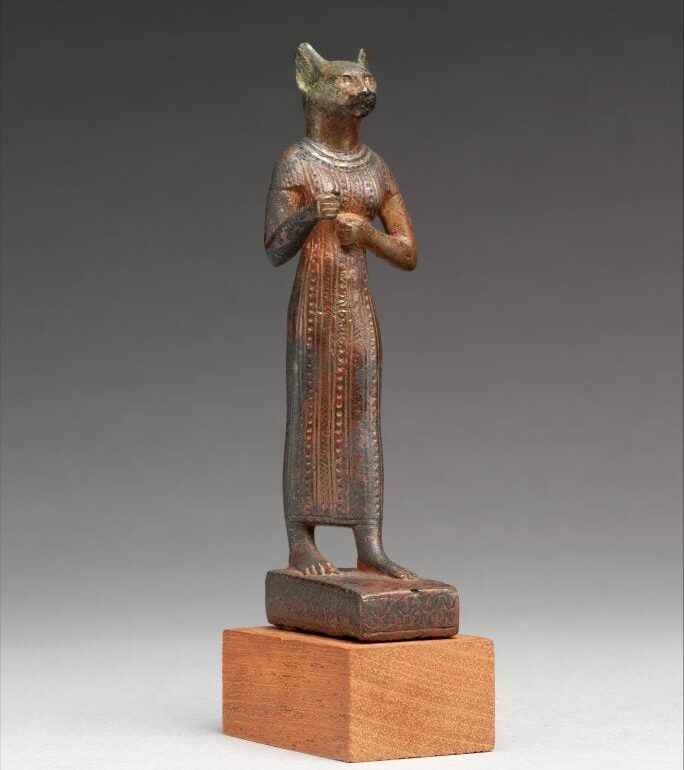09 August 2024
Art World
Cats and women have been linked in visual culture since Ancient Egypt.

Since the far-off times of Ancient Egypt, women and cats have been aligned in art and culture, taking root in ideas about wisdom, independence, cunning, warfare and protection, and secret or occult knowledge.
For instance, the goddess Bastet, the daughter of Ra, took the form of a cat and embodied aspects of well-being, safety, and pleasure. In her more bellicose form, Bastet was known as Sekhmet and represented war and its flames of destruction, along with healing.
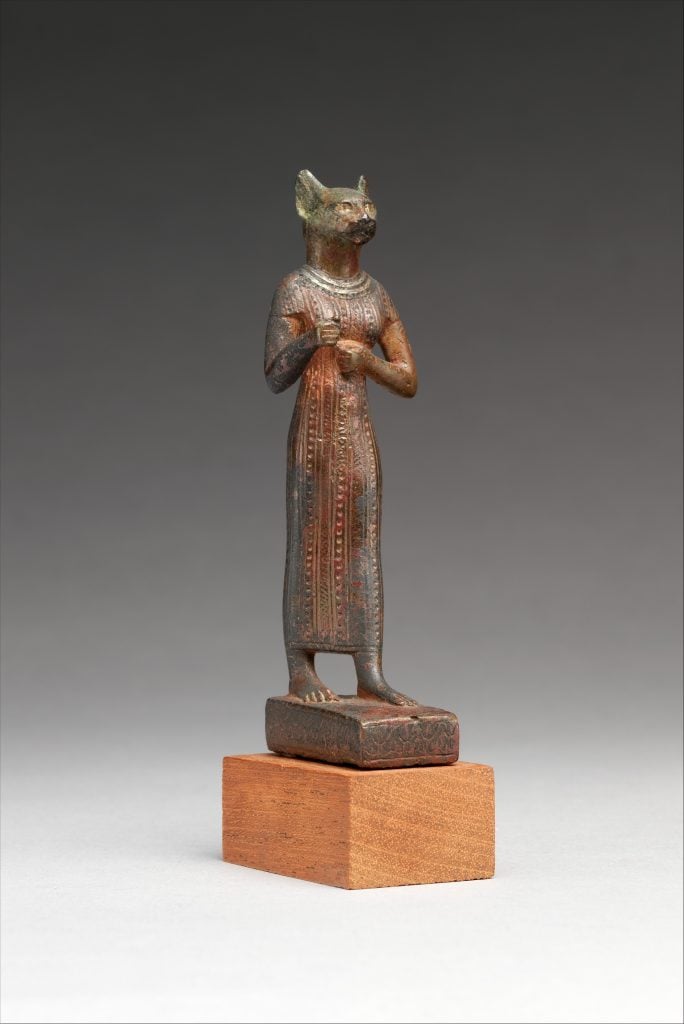
Bastet, Late Period–Ptolemaic Period (664–30 B.C.). Collection of the Metropolitan Museum of Art.
Over the millennia, links between the feminine and the feline have shifted and deepened, occasionally popping up in art history, too. In Ancient China, the goddess Li Shou was depicted as a cat, while in Japan, the famed maneki neko figure of a cat with a raised paw, was used to represent the ancient goddess of mercy. The goddess, according to myth, raised her paw to the emperor and later saved his life. In the Japanese Ukiyo-e prints, meanwhile, cats populate the heady world of theater with more mischievous intent.

Bodleian Library Bodley 764 f. 51r (England, c 1225–50)
Cats occupied a nebulous role during the Middle Ages, depending on location. The animals were simultaneously revered and beloved and scorned and feared. The 14th-century queen of France, Isabeau of Bavaria, was known to lavish gifts upon her pets, including her cat. And felines were known to live among nuns (and sometimes monks) in their cloisters, making fantastical appearances in illuminated manuscripts, too.
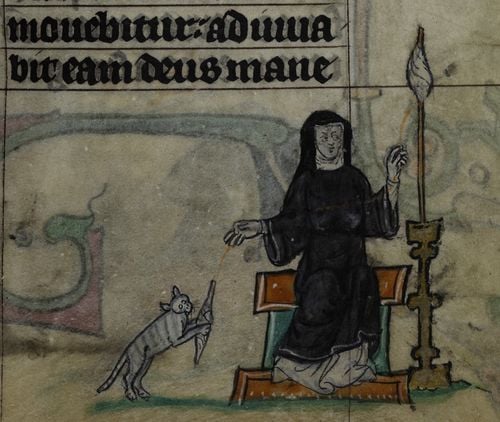
Detail of a miniature of a nun spinning thread, as her pet cat plays with the spindle; from the Maastricht Hours, the Netherlands (Liège), 1st quarter of the 14th century, Stowe MS 17, f. 34r. Collection of the British Library.
Recently, resurfaced remarks by vice presidential nominee JD Vance disparaging “childless cat ladies” have made waves on news channels and across social media—but what Vance might not know is that his rhetoric is rooted in misplaced medieval hysteria about our furry friends.
As the bubonic plague scourged Europe, religious sermonizers turned their vitriol against felines, aligning them with dark arts, witchcraft, and even the devil. In reality, however, cats might have curbed the rat-born pestilence.
Cats’ cleverness and their unwillingness to be trained are at the root of these suspicions against the animal, paralleling anxieties about women who chose to live outside of the norms of their times—by eschewing prescribed roles of wife and mother, by seeking knowledge or by gaining financial independence.
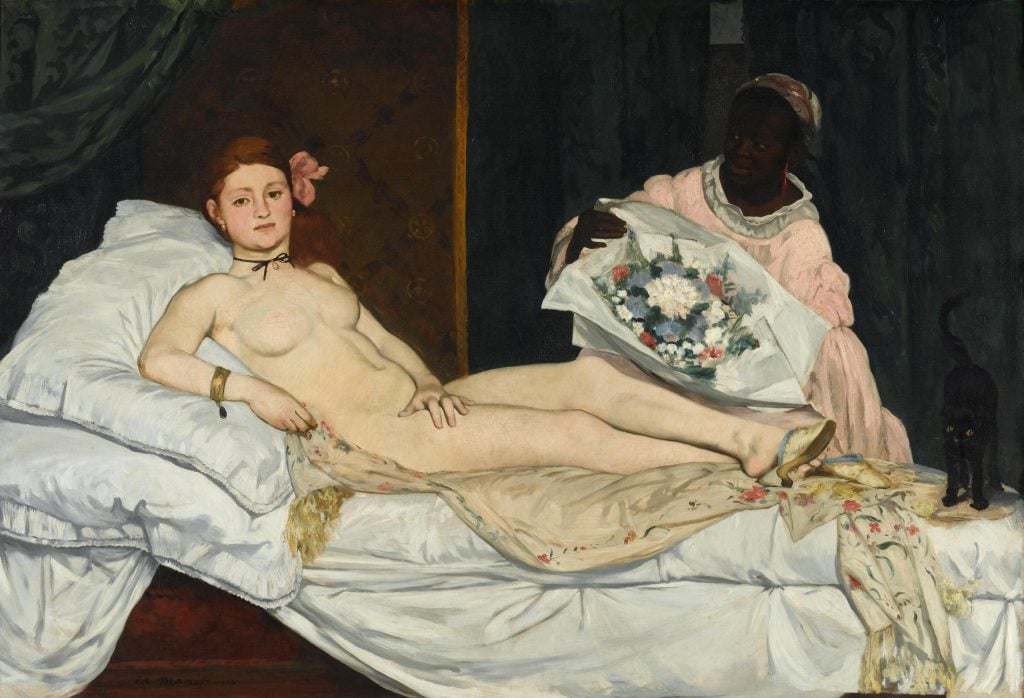
Edouard Manet, Olympia (1863). Collection of Musee D’Orsay.
In Edouard Manet’s Olympia, the artist’s famously modern vision of a 19th-century prostitute, a black cat arches its back at the foot of Olympia’s bed, with bright yellow eyes of surprise. Here, the cat acts as a stand-in for the cultural prejudices against women who lived like Olympia, unconventionally and independently.
Given these corollaries, perhaps it’s unsurprising how many women artists—both with and without children—have chosen to depict cats in their art or fully embraced the pleasures of the “cat lady” lifestyle. There are countless wonderful examples.
The late Romantic Belgian painter Henriëtte Ronner-Knip, for instance, made a career of her adorable paintings of domestic cats. At the turn of the last century, French painter Suzanne Valadon, who started her career as a trapeze artist and was known for her notorious string of much younger lovers, earned acclaim with her scandalizing female nudes. Valadon’s other favorite subject matter was her cats, particularly her big orange cat Raminou. On Fridays, she fed her “good Catholic cats” caviar, a fish, in place of red meat.

Leonor Fini and her Persian cat at her exhibition at the Drouant-David Gallery in Paris. Photo by Keystone-France/Gamma-Keystone via Getty Images.
Surrealist women, too, were fascinated by cats. Leonor Fini, a bisexual and a mystic, relished her feline companions, sitting down to dinner with her 23 cats almost nightly, and even hiring a separate car to chauffeur them everywhere she went. Needless to say, countless male artists, including Louis Wain, Henri Matisse, and Andy Warhol, have found boundless inspiration in feline friends, but that’s a story for another day.
To mark International Cat Day on August 8, we’ve found a few of our favorite “childless cat ladies” in art history who are having a pawsitively purffect time of it.

Kitagawa Utamaro, A Woman and a Cat (ca. 1793–94). Collection of the Metropolitan Museum of Art.
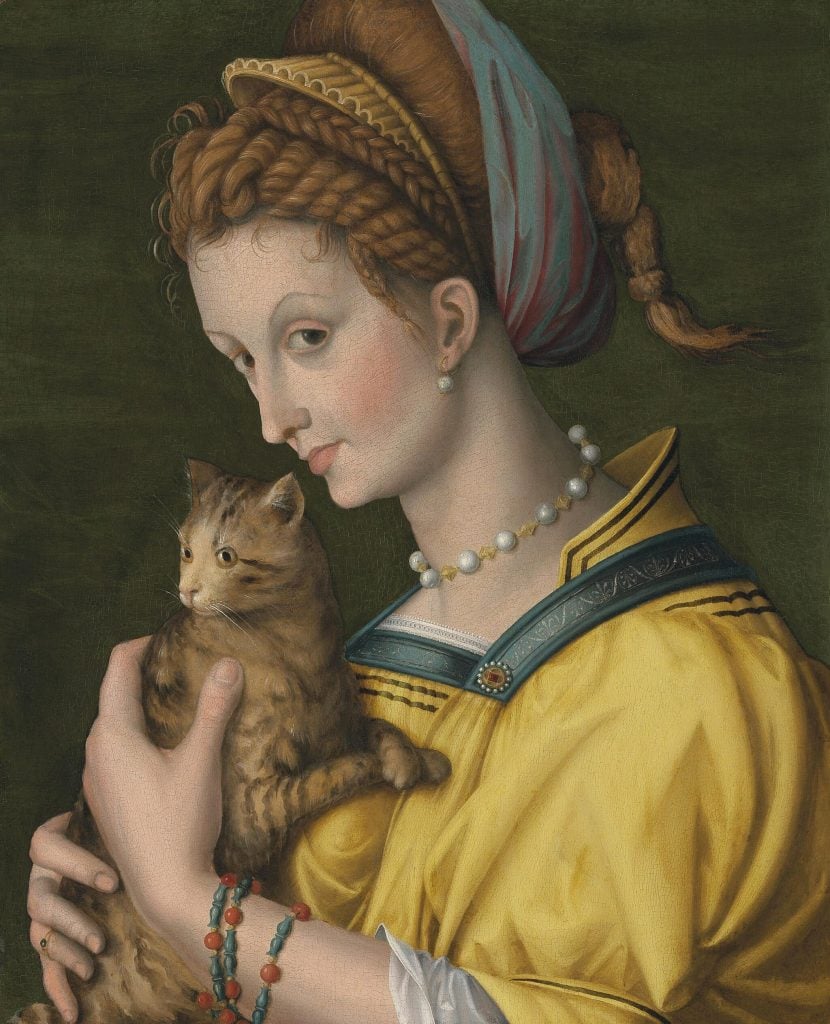
Francesco Bacchiacca, Portrait of a Young Lady Holding a Cat (1525).

Cecilia Beaux, Sita and Sarita (c. 1921). Collection of the National Portrait Gallery, Washington D.C.

Pierre-Auguste Renoir, Julie Manet (1887), Musée d’Orsay, Paris. Photo: VCG Wilson/Corbis via Getty Images.

François Boucher, Woman with a Cat (The Dangerous Caress) (ca. 1731-1735). Collection of the Legion of Honor, San Francisco.
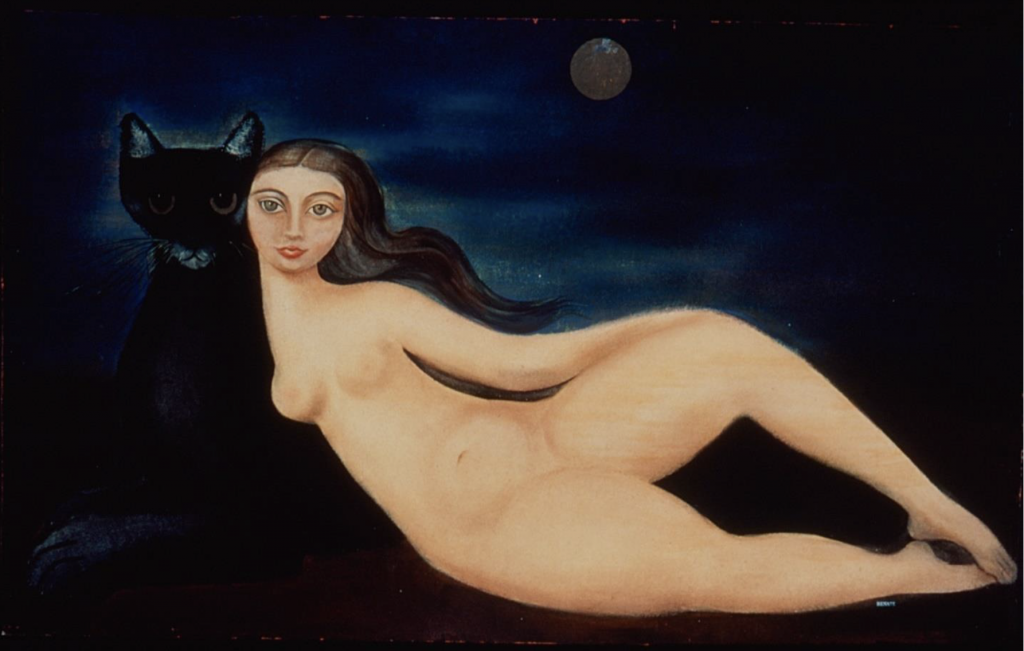
Renate Druks, Beauty and Beast (1953). Courtesy of the Ranch, Montauk.

From Yongzheng’s “Twelve Beauties” A Beauty at Leisure: Watching Cats While Handling Beads (18th Century).
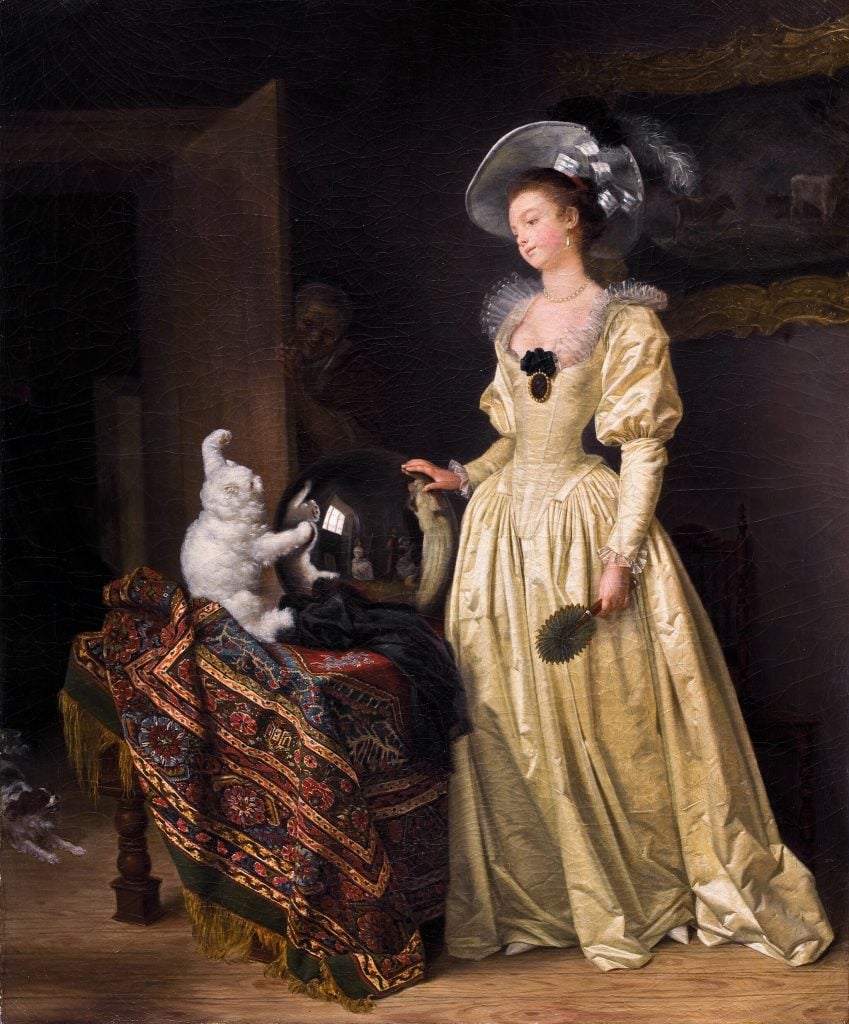
Jean Honoré Fragonard and Marguerite Gérard Grasse, The Angora Cat (ca. 1783). Collection of the Wallrad-Richartz Museum.
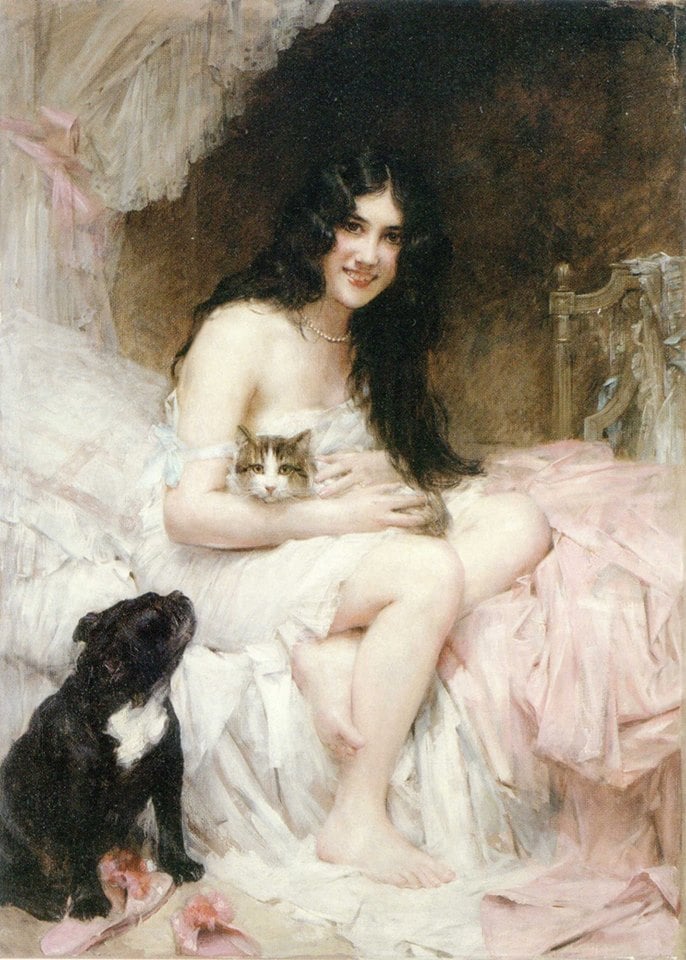
Leon François Comerre, Calinerie (n.d)
Follow Artnet News on Facebook:
Want to stay ahead of the art world? Subscribe to our newsletter to get the breaking news, eye-opening interviews, and incisive critical takes that drive the conversation forward.
More Trending Stories
This post was originally published on this site be sure to check out more of their content




